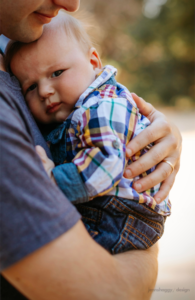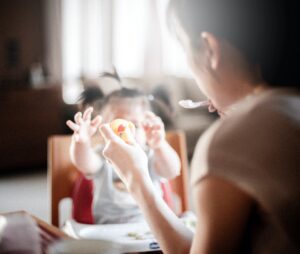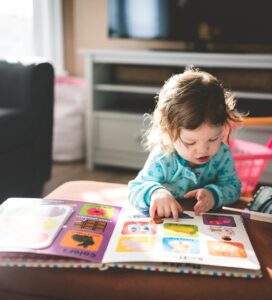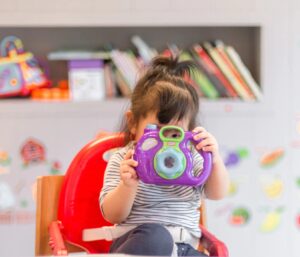By Iris Farrou
17 Oct, 2023
Childhood Health, Fatherhood, New Moms, Prevention, Procedures, Toddler Health, Your baby's health
allergic to, Allergy to medicine, antihistamines safe for babies, asthma, Baby Allergies, Blood test for babies, cats, dogs, dust, dust allergy, exzema, food sensitivity, How do I know if my baby has allergies, how to diagnose, Infant, is allergic, mold, Pediatric Allergist, Pediatrician, pets, toddlers, What age is safe for allergen exposure, what are the symptoms of anaphylactic shock
 We all know babies are fragile, and none other than parents of a newborn are more aware of this–and worried! Newborn babies can’t tell you what’s wrong with them, so the guessing game is nonstop, and the more you see your baby in distress, the more your worry skyrockets. Although parental anxiety may suspect the worst case scenario, sneezing and a runny nose, red eyes and itchiness could also just be signs of your baby experiencing allergies.
We all know babies are fragile, and none other than parents of a newborn are more aware of this–and worried! Newborn babies can’t tell you what’s wrong with them, so the guessing game is nonstop, and the more you see your baby in distress, the more your worry skyrockets. Although parental anxiety may suspect the worst case scenario, sneezing and a runny nose, red eyes and itchiness could also just be signs of your baby experiencing allergies.
Environmental and Seasonal Allergies
In fact, even very young kids can be allergic to pollen, dust, pet dander, and mold. Babies are more likely to experience allergies to foods and eczema–especially if you have a family history of those, as well as asthma. No region is safe from allergy triggers, but if you live in nature, are in close proximity to more allergens, have indoor pets, and generally enjoy the outdoors your baby may be exposed to more allergens. If they do have seasonal allergies, then the symptoms will begin.
- Itchiness and tendency to rub the eyes, ears and nose, as well as puffy or watery eyes
- Sneezing, wheezing, and frequent mouth breathing
- Dry cough with clear mucus, and possible shortness of breath
- Irritability or excessive fatigue
Food and Medicine Allergies
Food and medicine allergies have different symptoms, which are usually seen immediately after consumption of the offensive food or medication, within a few minutes or an hour or two later at most. If your baby is allergic to medication and their reaction is hives or a rash, that may take a few days to develop. However, immediate reactions may include hives, itching, shortness of breath, vomiting, nausea, or abdominal pain. Good news is that even if other symptoms are present, anaphylaxis is rare in babies.
Treating Allergies in Babies
Even though as adults we’d rush to take an antihistamine for our allergies, this is not recommended for babies under the age of 2. The safest treatment is to reduce your baby’s exposure to the allergen: if it’s pet dander you may want to limit the time spent with pets and close off certain areas in the house; for environmental allergies you may have to keep your windows closed and invest in an air purifier; food allergies will mean eliminating the foods with allergens and possibly consider w hether allergens may transfer to your baby through breastfeeding. You should consult with your pediatrician before administering any medication, even topical skin medications such as hydrocortisone cream.
Diagnosis
The good news is that even though your baby may not be able to articulate what’s going on, your pediatrician can perform a skin test to determine possible allergies– a test usually safe on anyone over 6 months of age. A blood test could also be done for younger babies, though it is not as sensitive as a skin test. Food allergens are usually determined by process of elimination, which can be a long process as you take out the allergens from your baby’s diet one by one every week. However, at the very least when you see a difference you will know what not to feed your baby!
More
By Iris Farrou
22 Aug, 2023
Childhood Health, Early Childhood Education, Fatherhood, Mental Health, New Moms, Parenting, Prevention, School, Toddler Health, Young adults & teens
abandonment, adjusting to change, Childhood Trauma, elementary school, faking sick, help my child adjust to school, high school, homesickness, how to help my child feel comfortable at school, issues, middle school, morning anxiety, morning routine, Preparing for school, preschool anxiety, school safety, separation anxiety, stomach aches before school, teachers

With Fall just around the corner, you know that back-to-school– or first-grade–season is upon us! Getting ready for the school year is always an adjustment for families, even more so if your first-born is about to join the first grade. There may be a lot of excitement, as well as nervousness, around the situation. How can you help your child, or children, and the whole family be better prepared for the school year?
Stress and Anxiety
It’s not unusual for first-graders to experience anxiety that takes the form of tummy aches or headaches, especially on Monday mornings or Sunday nights. Sometimes, you may even get a call from the school that your child is feeling unwell. These are not lies, nor are children faking discomfort in order to stay home. They are experiencing discomfort due to the anxiety of being away from home.
- Establish a morning routine that makes your family feel more connected; you can spend some extra snuggle time with your child, especially on Monday mornings, and allow enough time to have a good breakfast as a family.
- Especially in the first few weeks of school, you may want to get there early to cement the goodbye-routine: reassure your child that you are always available during the day if they need you, and remind them that they are safe. Remember that this can feel very daunting for a child, as they are spending a lot of time away from home–which they know as a safe place–and they are surrounded by new people in a new environment.
- Share your own stories from school, and bond over those memories with your child. It will make them feel much more comfortable to hear that their role model was also nervous going to school, or had the same issues as them. Sharing stories and experiences openly will not only enhance your child’s trust towards you, but it will reassure them that what they are feeling is normal.
- Be early for pickup time; your child’s separation anxiety is volatile until they fully adjust to school, and they are really looking forward to seeing you and feeling safe that they are going home. As the school day reaches its end, their expectation and nervousness heighterns: it is of immense importance that they see you waiting for them during pick up time, and are not left wondering or feeling abandoned.
Familiarity and Safe Spaces
Even if your child has attended pre-school, going to grade school is another can of worms… in addition, it is a new school and they don’t know what it looks like or what to expect. How can you help them feel secure about this change?
- Visit the school with them, walk through the campus and be present in this new space where they will be spending a lot of time without you. Trivial as it may sound, it will help your child tremendously to know what their future classroom will be like, where they will be sitting, where the restrooms are, the cafeteria, exit and pickup point, main office, etc.
- Meet the teachers if you can, as essentially they will be the “replacement” caretakers and safe people for your child while they are at school. If you can facilitate building trust and rapport with your child’s teachers before the school year begins, then your child will feel more comfortable in their expectations.
- Talk through the curriculum with your child, and explain what expectations come with grade school. It’s a new structure, so the more you can explain to them what their day will look like, what they will be doing at this new school, and what they will be doing at home as a learner, the better prepared they will be when they hear “homework” is expected to be completed.
As much as we would like to keep our children in a bubble, we all know that this is not possible. However, there is nothing more important than preparing for the school year as a family and validating your child’s anxiety–both before the school year starts and during the school year. Fingers crossed, this new school year will be filled with excitement and happiness! Remember that you and your child are a team in this, and you should always be able to reach out to the school for support if need be.
https://www.wikihow.com/Adjust-to-a-New-School
https://www.mayoclinichealthsystem.org/hometown-health/speaking-of-health/back-to-school-tips-to-help-students-adjust
https://www.ahaparenting.com/read/Help-kids-adjust-school
More
By Iris Farrou
18 Aug, 2023
Childhood Health, Early Childhood Education, Fatherhood, Lifestyle Tips, Mental Health, New Moms, Parenting, Toddler Health, Young adults & teens
Abuse, Accident, ACE, Childhood Illness, Childhood Trauma, Children, Community, Divorce, Family Dynamic, Financial Stress, Grieving, Kids, Mental Health, Neglect, Nightmares, Pediatric, Pediatric Mental Health Care, PTSD, Teenager, Toddler Trauma, Trauma, Traumatic Childhood Experiences, Violence, Witness, Witnessing

When we’re getting ready to start a new family, we may find ourselves reflecting on our own childhood experiences, and comparing with our partner how each person grew up– perhaps the goal of this introspection is to create a new family that is healthy, happy, and flourishes with good communication. If you are in the process of family planning, you may want to take into account ACEs: Adverse Childhood Experiences.
What are they?
Adverse Childhood Experiences are traumatic events children experience between the ages of 0-17. These have long lasting effects, may lead to chronic health conditions, and people address them well into adulthood. It is important to remember that ACEs affect a child’s brain, and how they experience the world.
ACEs are quite common, with 60-80% of US adults reporting they have had at least one adverse childhood experience up until age 17, and 1 in 6 US adults saying they’ve had four or more. The most potentially traumatic ACEs can include experiencing violence, abuse, or neglect in the home, neighborhood, or school, witnessing violence in the community or otherwise living in a dangerous environment (war zone, poverty stricken areas, etc.), going through a natural disaster, witnessing serious injuries or the death of another person, losing a loved one or experiencing parental loss due to separation. However, this is by no means an exhaustive list of possible ACEs: any event that may cause trauma and long-term stress can be classified as an adverse childhood experience that adversely affects a person as an adult.
How do I know if my child has had an ACE?
The effects of a traumatic or stressful event may not be immediately visible, or take place soon after the traumatic event has occurred. If your child confides something in you that would be traumatic, then that is a clear indication of an event that would warrant immediate support–with the assistance of a mental health professional who specializes in children or teenagers.
Additionally, if you are going through something as a family, such as a divorce, death, fatal accident or illness, natural disaster, poverty, community violence, unemployment, housing and/or financial insecurity, you may want to address those events as potentially traumatic for your child. We cannot always correct or control life’s adversities, but we can recognize them for what they are and present this as a starting point to healing. If you recognize, as a family, that an event has been traumatic then this shows to your child that it’s ok for things to not be “normal”–that it’s part of life, and that our reactions or daily life will change when something happens.
If there is an event or experience that you do not know about, once your child has had time to process the experience you may start noticing signs of trauma that could include, but are not limited to: difficulty sleeping or having nightmares, wetting the bed, changes to their mood, fear of other people, difficulties in school, avoiding situations, events, or people (these may be directly associated with the traumatic event), as well as difficulty showing affection towards family and friends–especially if this is a change from their usual behavior.
How can we avoid ACEs?
The unfortunate truth is that we cannot completely eliminate ACEs, as much as we may want to. What we can do, however, is raise awareness about them so that we can all start thinking differently about childhood trauma. Historically disadvantaged populations are more susceptible to trauma, but that does not mean that everyone else is excluded. The causes may be societal, historical, natural forces, or people, but each one of us can help lessen the blow of an ACE: whether you are a parent, friend, caregiver, teacher, or neighbor. Raising awareness of ACEs means switching the focus from individual responsibility to community solutions: we can all help prevent ACEs, and help children develop strong coping mechanisms. It is important to reduce the stigma associated with parents who struggle to provide a safe environment for their children, and seek community and/or government support to do so. It is also important to remember that any one of us can promote safe, stable, and nurturing environments where children are present.
https://www.cdc.gov/violenceprevention/aces/fastfact.html
https://my.clevelandclinic.org/health/symptoms/24875-adverse-childhood-experiences-ace
More
By Iris Farrou
27 Jul, 2023
Childhood Health, Fatherhood, Lifestyle Tips, New Moms, Parenting, Postpartum, Toddler Health, Your baby's health
are strollers too hot in the summer, Baby, Baby Safety in Summer, how do I keep my newborn safe in the sun, How to keep my baby from overheating, is central AC safe for my baby, keep my baby cool, keep my infant cool, new dads, new mom advice, new moms, newborn body temperature regulation, Toddler, toddler overheating, what clothing is best for baby in hot weather, what time of day is best to go outside during summer with newborn
 If you’re spending your first summer with your baby, there are a few things to keep in mind about newborn babies and the summer heat so everyone can remain safe and have an enjoyable summer. Depending on which part of the US you live in or are visiting this summer, keep in mind that the heat may continue into the fall months–or it may be humid heat rather than scorching sun. Either way, the key information to remember is that babies cannot regulate their own body temperatures– older children and adults are able to do so, but babies need extra assistance and protection.
If you’re spending your first summer with your baby, there are a few things to keep in mind about newborn babies and the summer heat so everyone can remain safe and have an enjoyable summer. Depending on which part of the US you live in or are visiting this summer, keep in mind that the heat may continue into the fall months–or it may be humid heat rather than scorching sun. Either way, the key information to remember is that babies cannot regulate their own body temperatures– older children and adults are able to do so, but babies need extra assistance and protection.
- Overheating is very risky for newborn babies: if you are hot, then your baby is definitely hot as well. It is not unusual or “wrong” to keep babies in either a light onesie or only a diaper.
- Keep the temperature cool: if you have a central AC or a window AC unit and can afford to keep it running to keep the temperature lower than 77F degrees, that is ideal for a baby. Utilizing box fans on your windows for air circulation, as well as ceiling fans, is another method to ensure your baby stays cool.
- Help them sleep comfortably: especially when sleeping, your baby can be only in a diaper or swaddled using very thin, lightweight and breathable material. If you are not using central AC, make sure there is a fan in the room where your baby is sleeping–preferably not pointed directly at them, though.
- Proper hydration: you know that’s true for people of all ages, and the same goes for babies. If you notice infrequent urination or crying without tears, these are signs that dehydration has already occurred. Your instinct may be to give your newborn baby water, but that is a big NO in this case; their bodies cannot process water. Breastfeeding or milk formula in smaller and more frequent doses are a better solution. If your baby is already eating other foods, try to use more hydrating foods in their diet and provide more frequent–but still smaller–meals.
If the outside temperature is above 90 degrees, or 84ish with humidity, this is when your newborn, toddlers, or young children should NOT be outside, especially no more than 15 minutes if you absolutely have to be out. Try to not stay in the heat for too long, and seek shelter in air-conditioned spaces.
If you are using a stroller, keep in mind that it may not be the best idea to go for a walk in the heat—however, you should choose a stroller with a large canopy for extra protection for the warmer months. Avoid going outside in peak heat times of 10am-2pm, and dress your baby in breathable cotton clothing, preferably loose, that covers their skin as much as possible. Wide hats and sunglasses do look adorable on babies, and are also very much necessary.
https://www.michiganmedicine.org/health-lab/how-protect-your-baby-dangers-hot-weather
https://www.whattoexpect.com/first-year/health-and-safety/how-to-protect-children-from-extreme-heat/
More
By Iris Farrou
22 Jun, 2023
Childhood Health, Diet & Exercise, Fatherhood, New Moms, Parenting, Prevention, Toddler Health, Women's Health, Young adults & teens, Your baby's health
Anxiety, Baby, Boost Immunity, Child, food, Good Health, Immune System, Immunizations, Importance of, Pre-Teen, Probiotics, Sleep, Strengthen, Stress, Toddler, Vaccine, Vaccines, Vitamins, Wellbeing

The first concern every parent has when it comes to their child’s health is to keep them safe as much as possible. With extracurricular activities, summer camps, and attending school being a normal part of any child’s life, and going hand in hand with exposure to germs, it is often a challenge to help your children’s immune system stay strong. There are two routes that can assist you in this struggle: diet and lifestyle.
Before we talk about details on either path, there is one undeniable basis: make sure your children are up to date on important vaccines. For all people 6 months and older, the flu shot is recommended. COVID vaccines are now safe for younger ages as well–make sure all eligible family members are immunized, and keep checking with your pediatrician about being up to date on other necessary immunizations.
Diet and Supplements
In an ideal world, you have the time to prepare the best and healthiest meals for your family, and your children are never picky eaters. That would be a wonderful movie, but it is not the truth. Though pediatricians advise against using supplements and multivitamins to enrich your child’s diet–particularly because those are not well regulated in the US and their ingredients are not guaranteed–there are certain cases when supplements are needed.
Vitamin D is the first vitamin that helps children build a strong immune system; they usually would absorb it from the sun. However, if you do not live in a sunny area, there are certain kid-friendly foods that can help with that: fortified Vitamin D milk and yogurt, and orange juice. If you are lucky enough to be able to serve your child salmon, trout, tuna, and sardines then you are raising their chances of absorbing the necessary amount of Vitamin D. To use supplements, it is suggested that you first consult with your doctor and do a blood panel to see where your child’s Vitamin D levels are at, and what supplement is most appropriate for them.
Zinc is an important mineral that assists kids’ immune system. Oysters, red meat, and poultry are the best sources of zinc, followed by beans and nuts. If your child does not accept any of these foods, consult your pediatrician on how to proceed with a zinc supplement.
Probiotics and prebiotics play an important role in our immune system, specifically because they ensure good gut health. Probiotics ensure a good balance of helpful bacteria in our bodies, and in addition to yogurts you can try giving your child fermented foods–like pickles or miso–to help with that. Prebiotics also stimulate the growth of good bacteria, and they are mostly plant fibers: green bananas or plantains, yams, asparagus.
Lifestyle
Keep in mind that a healthy lifestyle is additional to a balanced diet when it comes to fortifying your child’s immune system. If you don’t have fruits and vegetables, as well as nuts and seeds in their diet, lifestyle changes can only do so much.
However, keep in mind that children need lots of sleep for their system to function properly and recharge. 12-16 hours for infants and around 10 hours for kids is what’s necessary to assist your kids in being healthy and help keep them on a regular schedule. Additionally, exercise and keeping active can do wonders for our immune system: encourage your child to be physically active at least one hour a day in some form of activity that they like; if they appreciate sports, so much the better! Physical activity doesn’t only contribute to overall good health, but it also helps manage stress. When we are stressed, especially in cases of heightened or chronic stress, our immune system is volatile and makes us more prone to infections. Be mindful of the stress levels your child may be facing, and encourage activities that make them happy and fulfilled.
https://www.health.harvard.edu/blog/boosting-your-childs-immune-system-202110122614
https://health.clevelandclinic.org/how-to-boost-your-kids-immunity/
More
By Iris Farrou
21 May, 2023
Fatherhood, Lifestyle Tips, Mental Health, New Moms, Parenting, Toddler Health, Young adults & teens, Your baby's health
Bedtime Routine, Bonding, Children's Bedtime, Emotional Regulation, Healthy Amount of Sleep, Healthy Family Dynamic, Healthy Sleep Habits, How to Create Bedtime Routine, Kid Bedtime, Nap, Regulation, Routine, Sleep, Sleep Schedules, Teenager, Teens, Toddler, Toddler Mental Health, Well-being

Whether it comes to you as an adult, or to you as a parent, or even to your family as a whole–regardless of your kids’ ages–sleep is a topic of discussion in all households. When you are a new parent, it’s almost certain that you will not sleep through the night unless your baby does; when you are parenting a toddler, you may find that bedtime is a point of contention. Like most things when it comes to parenting, the caregivers are role models: if we don’t have good sleep habits, and are not properly informed, how can we teach our children to follow a bedtime routine?
Importance of Healthy Sleep
Establishing a bedtime routine is helpful for not only our physical health, but also for our mental health, energy levels and ability to focus. When it comes to school-age children, receiving a good night’s sleep consistently improves their working memory, concentration and other cognitive skills, as well as attention. In the long run, this translates to better academic performance, readiness for school and other activities that require focus throughout the day, as well as sharp social skills.
Of course, this applies to teenagers and adults as well: the better your sleep routine is, the better equipped you are to face each day and/or help your body regulate your nervous system. Sleep habits are also an element of self-care that is often overlooked, and when implemented into a family routine can have a lot of positive effects on the family dynamic.
Bedtime Routine
To start building a healthy bedtime routine for your children, the first thing you should remember is that you are an active participant in it–it is a family activity. The second piece of advice is to keep the routine simple and repeat it at the same time every evening, with the same order. For example, when it’s close to bedtime you can start dimming the lights down and turning off screens. Then, you can start a 4-step bedtime routine of having a snack, brushing your teeth, putting on pajamas, and reading a book.
Some other activities that have shown positive effects when it comes to bedtime include a bath or diaper change, going to the bathroom, singing a song together or a lullaby, talking with your kid about their day, and of course cuddling/rocking. For both children and adults, the bedtime routine should consist of stress-free, non-stimulating, and soothing activities. Remember that physically and psychologically stressful activities can increase alertness, thus damaging the body’s ability to wind down.
Like most parenting activities, even a bedtime routine is an opportunity to not only bond with your child and create memories, but also help them grow into independent adults. A simple act such as leaving the room when your child is sleepy but not fully sleeping can teach them how to fall asleep on their own.
https://www.sleepfoundation.org/children-and-sleep/bedtime-routine
https://healthysleep.med.harvard.edu/healthy/getting/overcoming/tips
More
By Iris Farrou
09 May, 2023
Early Childhood Education, Fatherhood, Parenting, Queer Health, Reproductive health, Sexual health, Toddler Health, Women's Health, Young adults & teens
Adolescents, body positivity, Hormone Changes in Children, How to explain sex, How to teach children about sex, Parenting Preteens, Preteen, Safe Sex for Teens, Self-Stimulation, Sex Ed, Sexual Education for Toddlers, Teaching Boundaries, Tween, When should I explain sex, Where do babies come from

If you are parenting a teenager, you are probably thinking of when would be the right time to have “the talk.” Well, the time starts when curiosity strikes in their toddler years! You don’t have to turn back time, but if you are a new parent you may want to start taking notes: it is never too early to start talking to your children about sex education, their bodies, and relationships. Consider sex education a broad subject, and not just an awkward talk about hormone-driven intimate moments.
Sex education includes talking with your children about anatomy, teaching them the proper names for their body parts as soon as they start making associations between items and words, educating them on how to take care of themselves and their bodily functions, and being by their side when they start being able to express their feelings and/or they start to understand themselves in relation to others; relationships and boundaries are also part of sex education.
Early Exploration
It is best to let your toddler set the time for questions regarding anatomy and sex, but you should also be aware of what questions may be opportunities for further discussions. For example, during bath time you can take the opportunity to talk with your child about their anatomy, and which parts of the body are private. Keep your answers short and simple, and age appropriate– if your child seems confused about something, don’t be embarrassed to explain further. You are, after all, the role model: the more maturely you approach the conversation, the more secure your child will feel about your knowledge.
Curiosity
It is not uncommon for toddlers to express their natural curiosity through self-stimulation. If you notice your child engaging with their genitals, it is advised to encourage their curiosity while also reminding them that some acts and areas of the body are private. This self exploration may coincide with curiosity about others, which can lead to uncomfortable social interactions. If your child asks about pregnancy or “where do babies come from” in front of others, it’s ok to take a moment in a social setting to explain some things to them. Should the question have made someone else uncomfortable, take the opportunity to apologize on behalf of your child, and model boundary-respectful behavior for them. It is also normal during this time for children to want to play doctor with their friends, and many families choose to monitor their children’s play time at this stage of their development, or set limits.
New Knowledge
As much as you may try to be open with your child and monitor their knowledge of sex education matters, you should be aware that new knowledge always finds its way to young children. Unfortunately, new knowledge may not always come from reputable sources or be truthful and accurate. If your child asks you a question that seems off, or hasn’t been discussed in your household, the best course of action would be to ask them where they heard that, or try to locate the source of the information. Then, you could ask them to share what they already know about the topic and begin a conversation with them. It is important to let your child know you are comfortable with those questions, knowledgeable on the topics, and that they can trust you with their curiosity.
https://www.mayoclinic.org/healthy-lifestyle/sexual-health/in-depth/sex-education/art-20044104
https://www.plannedparenthood.org/learn/parents/tips-talking
More
By Iris Farrou
26 Apr, 2023
Early Childhood Education, Fatherhood, Lifestyle Tips, New Moms, Parenting, Toddler Health, Your baby's health
Autism, Cognitive Abilities and Functions, Early Childhood Development, Genetic Disorder, Infant, Loss of Speech, Neurological Disorders, Overly Agitated, Rett Syndrome, Slow Development, Spectrum Disorder, Toddler

It is possible that you may not even have heard of Rett Syndrome, as it is a very rare disorder that almost exclusively affects females. According to Cleveland Clinic, 1 in every 10,000- 15,000 baby girls is born with Rett Syndrome–very rarely are males affected. In short, Rett syndrome is a genetic neurological disorder that affects the development of the brain and causes a progressive loss of motor skills and language over 4 stages: early onset; rapid deterioration; plateau and late motor deterioration. Most babies born with Rett Syndrome appear to develop normally until 6 months of age, when symptoms start to appear–most pronounced changes take place between 12 and 18 months of age.
What are the Symptoms?
As any new parent, you are likely very closely observing your child’s growth, and keeping a close eye on the development of their mental, linguistic, and motor skills. Know that before a diagnosis for Rett Syndrome is given, other conditions that may resemble its symptoms must be ruled out first.
- One of the first symptoms is being born with an abnormally small head–as the infant grows, there will be delayed growth in other parts of the body as well.
- Loss of movement and coordination abilities is another symptom. At the age when your baby should normally learn how to crawl, walk, or use their hands you may notice a rapid loss of these abilities.
- Loss of linguistic and communication abilities is often seen in children with Rett Syndrome as well. Children impacted by Rett may rapidly lose the ability to speak, or communicate in other ways; this can be accompanied by a loss of interest in their surroundings as well.
Some other symptoms closely resemble more common neurological disorders–like Autism Spectrum Disorder–since children may develop unusual eye and hand movements that are repetitive and seemingly purposeless, may become increasingly and easily irritable and agitated, display intellectual disabilities, or suffer from sleep disturbances.
How is it diagnosed?
As mentioned, since Rett Syndrome can resemble other neurological or genetic disorders, most professionals will approach it by process of elimination. Parents and caregivers play a big role in the diagnosis process as they can keep a detailed record of the child’s development and activities/responses.
If healthcare providers deem it necessary, or parents request it, then a simple blood test is performed to look for the gene mutation MECP2 that has been known to confirm the diagnosis of Rett Syndrome. Unfortunately, this mutation is quite random (and rare) so pre-genetic testing will not show any results. In fact, the chance of passing down Rett Syndrome from a healthy parent to their child is less than 1%. If someone in your family has been diagnosed with Rett Syndrome, you would want to bring this up with your healthcare provider, but Rett is generally not an inherited condition.
https://www.mayoclinic.org/diseases-conditions/rett-syndrome/diagnosis-treatment/drc-20377233
https://my.clevelandclinic.org/health/articles/6089-rett-syndrome#diagnosis-and-tests
More
By Iris Farrou
17 Mar, 2023
Early Childhood Education, Fatherhood, Lifestyle Tips, New Moms, Parenting, Toddler Health
Cognition, Cognitive Abilities and Functions, Early Childhood Development, Healthy Brain Development, Language Development, PreK, Prekindergarten, Teaching How to Read, Toddler Education

One of the biggest milestones in a toddler’s life is when they first start to use words and display other communication skills, beyond crying. Early language development may look different for each toddler–we do have to remember they are individual people, after all–but here are some key milestones that are expected for each age group:
1 year old: by this time, your toddler should be able to say a handful of words. Of course, this is in addition to babbling, and the key skill of trying to imitate your voice! They are trying to imitate the sounds they hear, and at this age you should be hearing consonants and vowels coming clearly out of your baby’s mouth. You may also notice that they are using hand and body gestures to communicate certain needs or activities, like pointing to their toys for play time or touching their mouth for snacks. This is a normal process of cognitive development, and you can help enhance it by talking to them as much as possible and helping them follow simple directions by associating words with movements, like saying “up” and helping lift them.
2 years old: this is the point where your toddler should have a steady vocabulary they are repeating, and they begin to expand it. You can help them by reading more and more stories to them, or using more advanced language than before. Additionally, they are able to comprehend sentence structure (slowly) and you may see them using two-word sentences and linking words. Building on their conquered skills of body gestures, they are now able to identify objects and body parts and clearly name them. 2 y/os may also exhibit understanding of slightly more abstract concepts, such as using pronouns.
3 years old: your toddler should have advanced to forming simple sentences and speaking clearly by this age. This goes hand in hand with their ability to string multiple words together. You can help expand this skill by repeating their word combinations back to them every time they use them, and model new word combinations to encourage them to try them. Toddlers at this age are also able to use the correct words to identify both objects and needs. Since their cognitive abilities are growing, you will also notice they can follow two part requests like “Please pick up your shoes and put them on the shelf.”
4 years old: this is considered an age when your toddler is turning into a child, so you will see more advanced language patterns emerge– like them creating more complex sentences and annunciating them clearly. Your child should also be able to identify shapes, colors, and letters, especially if those appear on objects they see often. Their ability to understand more abstract concepts will be more advanced, and they start recognizing the concept of time, like moments throughout the day. It is not unlikely that your child can now follow complex requests, and voice their own wants and needs in more complex sentences, or multi-part sentences.
https://www.parents.com/toddlers-preschoolers/development/language/language-development-milestones-ages-1-to-4/
https://www.teachearlyyears.com/learning-and-development/view/7-ways-to-support-language-development
More
By Iris Farrou
13 Jan, 2023
Fatherhood, Lifestyle Tips, Mental Health, New Moms, Parenting, Toddler Health, Your baby's health
ADHD, Children, Learning Disabilities, Neurodivergence, Neurodivergent, Preschool, Toddler Mental Health

There is a general tendency for parents to become most concerned about their children’s neurological development when it’s time for their kids to join a preschool or other educational institution. A lot of schools are aware of, and keep an eye out, for behavioral patterns that may indicate a child is neurodivergent: this can span from what is commonly referred to as learning disabilities, to ADHD, and autism. Though schools can be a great resource in helping children with neurodiverse brains walk through life, the most important coping strategies and mechanisms come from the family unit itself. In fact, there are many signs well before a child joins the school system that they may have a neurodivergent brain.
What are those terms?
Neurotypical children are those whose brains develop in ways that are typical for their age and stage. About 1 in 5-6 children exhibit variations in their brain development, the most common of which are dyslexia, attention deficit hyperactivity disorder, and autism. These children can be described as neurodivergent. These differences are not something that needs to be treated, or fixed: rather, they are a part of natural variation. When we refer to treatments about neurodivergent children, we mainly talk about coping mechanisms by the child itself, the family, and the school system–in some cases, treatment does include medications as well, but in no case is the end goal to “fix” a child.
How do I recognize the symptoms?
Because we are talking about variations in the brains and its functions, there is no clean-cut way in which a parent can determine their child is neurodivergent. Instead, there is most usually a combination of signs in their behavior–and if you discuss the details of those with a physician or therapist, you can gain more insight into how to best accommodate your child. Let’s start with some symptoms that if persistent and repeated over the course of a few months, may indicate ADHD:
- Trouble with details and making careless mistakes
- Trouble focusing on tasks of at play, and trouble focusing when an adult speaks to them
- Challenges with following through on instructions, tasks, or homework as well as organizing
- Difficulty keeping track of their belongings and/or remembering things in daily activities
These are just a few of the signs of inattention, and if your child also displays issues of impulsivity or hyperactivity over a consistent period of time–usually more than 6 months–and seems to display 6 or more signs, you may want to consider consulting with a specialist.
https://raisingchildren.net.au/guides/a-z-health-reference/neurodiversity-neurodivergence-guide-for-families
https://www.iowaclinic.com/primary-care/specialties/pediatrics/early-warning-signs-adhd-children/
More
 We all know babies are fragile, and none other than parents of a newborn are more aware of this–and worried! Newborn babies can’t tell you what’s wrong with them, so the guessing game is nonstop, and the more you see your baby in distress, the more your worry skyrockets. Although parental anxiety may suspect the worst case scenario, sneezing and a runny nose, red eyes and itchiness could also just be signs of your baby experiencing allergies.
We all know babies are fragile, and none other than parents of a newborn are more aware of this–and worried! Newborn babies can’t tell you what’s wrong with them, so the guessing game is nonstop, and the more you see your baby in distress, the more your worry skyrockets. Although parental anxiety may suspect the worst case scenario, sneezing and a runny nose, red eyes and itchiness could also just be signs of your baby experiencing allergies. 








